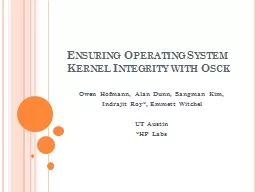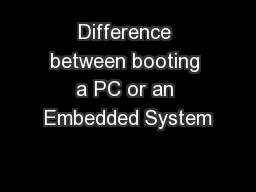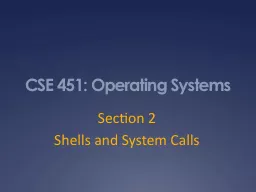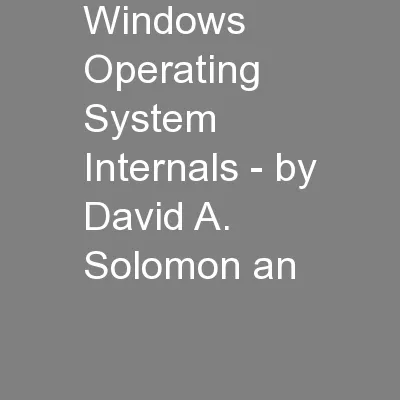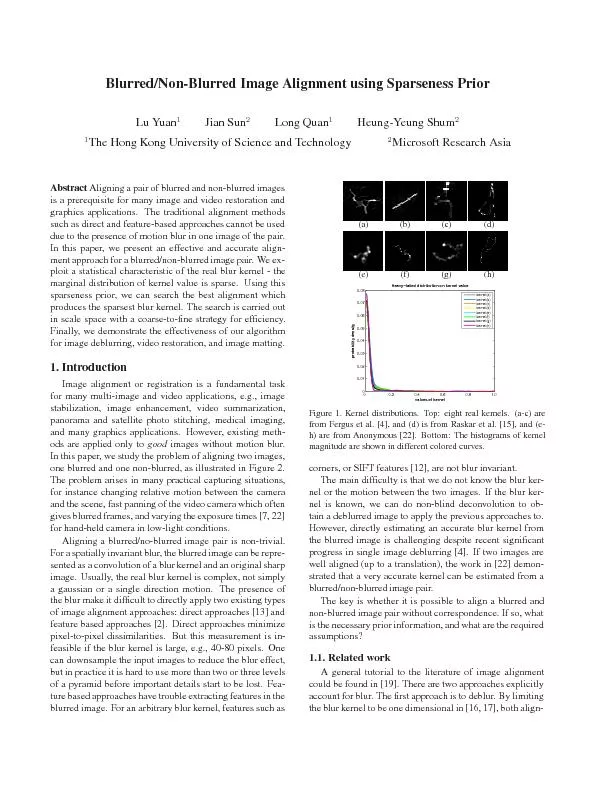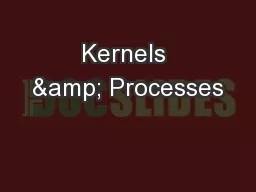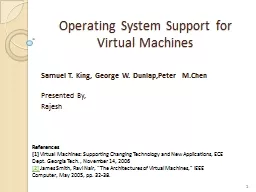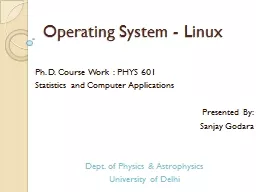PPT-Ensuring Operating System Kernel Integrity with
Author : marina-yarberry | Published Date : 2016-04-06
Osck Owen Hofmann Alan Dunn Sangman Kim Indrajit Roy Emmett Witchel UT Austin HP Labs Rootkits are dangerous Adversary exploits insecure system Leave backdoor
Presentation Embed Code
Download Presentation
Download Presentation The PPT/PDF document "Ensuring Operating System Kernel Integri..." is the property of its rightful owner. Permission is granted to download and print the materials on this website for personal, non-commercial use only, and to display it on your personal computer provided you do not modify the materials and that you retain all copyright notices contained in the materials. By downloading content from our website, you accept the terms of this agreement.
Ensuring Operating System Kernel Integrity with: Transcript
Download Rules Of Document
"Ensuring Operating System Kernel Integrity with"The content belongs to its owner. You may download and print it for personal use, without modification, and keep all copyright notices. By downloading, you agree to these terms.
Related Documents

